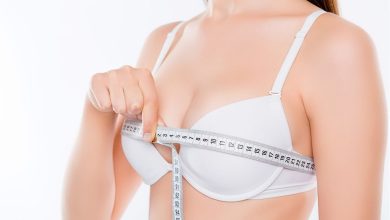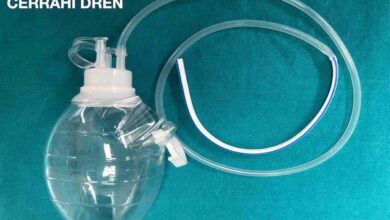Rippling Problem in Breasts With Silicone Implants
In the months or years following breast augmentation surgery with silicone implants, some patients experience a deformity called “rippling” that is characterized by a wavy appearance on the breasts when leaning forward or even when standing still.
This rippling may be so subtle that only the patient feels it when she touches her own breast, or it may be so obvious that it is visible when standing or leaning forward. This condition, which is observed more often in areas close to the junction of the breast with the rib cage and in the upper half of the breast, can be extremely annoying visually, although it does not pose a health risk.
What Are The Causes of Rippling In A Breast With Silicone Implant?
There are multiple factors that play a role in the development of rippling deformity in a breast with silicone implant.
- Wavy Surface of The Silicon Implant
The majority of silicone implants used for breast augmentation has a soft and flexible structure that mimics the feel of a natural breast when touched. However, this feature brings along the rippling problem. Especially when you hold a round-shaped silicone implant from one side and lift it in the air, you can see the ripples on it. This problem is more common in cases where saline-filled breast implants are used.
Implant models with a more stretched surface that provide a fuller breast appearance thanks to their silicone gel content have been created to minimize rippling on the implant and improve the breast projection. Textured implants and those with an anatomical shape such as teardrop implants cause less rippling. Other silicone models, on the other hand, have been developed under several brands, with less soft and more viscous silicone gel contents that cause less rippling.
- The Thinness Of The Soft Tissue Layer That Covers The Silicone Implant
The common feature of all patients with rippling deformity in their breasts is that the breast tissue covering the silicone implant is much thinner than normal. This deformity is more common in thin patients and patients whose implants are placed in a subglandular (supramuscular) plane instead of a subpectoral (submuscular) plane. In most cases, such a rippling problem is not observed in the first few postoperative months, but the soft tissue may get thinner over time due to the pressure applied by the silicone implant to the breast tissue on it.
The rippling problem is less common in cases where implants are placed in a subpectoral (submuscular) pouch, compared to cases where the implants are placed in a subglandular (supramuscular) pouch.
- Excessive Width of the Pouch, Where The Silicone Implant Is Placed
First a pouch is created in a subglandular or submuscular plane to place the silicone implant. Normally, the volume of this pouch is equal to that of the implant, so it holds the implant in place. If this pocket is prepared wider than normal, or if this pouch and the sheath surrounding the implant become too wide over time due to the weight of the implant or massages, the implant moves freely upward-downward or inward-outward in this pouch, causing “rippling” in the skin of the breast with a silicone implant.
The risk of rippling deformity is higher in patients with loose and thin breast skin and in cases where large implants are placed in a supramuscular plane.
- Largeness of The Silicone Implant
The weight and pressure on the surrounding tissues increase as the size of the silicone implant increases. The tissues around the implant begin to get thinner and loose, and consequently sag months or years after the surgery, and the rippling becomes more noticeable.
Who Are More Likely To Face Rippling Deformity?
- Rippling deformity is more common in those who are underweight and have thin breast tissue and skin;
- Those who have silicone implants placed in a supramuscular-submammary plane;
- Those who have round-shaped implants;
- Those who have implants filled with very soft silicone gel or saline; and
- Those who have large implants
What Do I Do To Prevent The Rippling Deformity?
In this regard, I pay the most attention to making sure that, I place the implant in the pouch prepared in a subpectoral plan (dual plan) in the majority of my patients, except for selected patients with adequatethick breast tissue, and I never try to place large implants exceeding the capacity of the pouch. In cases where the skin is loose or slightly sagging, I place normal volume implants and perform a surgical breast lifting procedure in the same session, instead of performing a breast lift breast lift procedure by placing very large implants.
By sticking to the principles mentioned above, I think that I prevent the possibility of seeing a very large, very saggy breast with a rippling deformity a few months or years after the surgery.
What Are The Treatment Options For Rippling Deformity In Breasts With Silicone Implants?
- Creating a new pouch under the pectoral muscle: The implant placed in a subglandular (supramuscular) plane is removed, a new pouch is created under the pectoral muscle, and then the implant is placed in this new pouch. In this way, rippling on the implant is better hidden with the muscle tissue added to the tissue layer covering the implant.
- Fat injection: Fat cells taken from another region of the body, such as the abdomen and hips, are injected under the skin of the rippling areas. In this way, the tissue layer covering the implant is thickened. In some cases, a second fat injection (lipofilling) may be needed after 3 to 6 months. The patient should not be too thin, and should have enough fat tissue to allow for the liposuction procedure.
- Making the silicone implant and its surrounding space (sheath) compatible with each other: If the breast tissue becomes excessively loose and sagging over time, the breast lift (mastopexy) surgery tightens the sheath around the implant. If the breast tissue is not too loose but the implant is relatively small, this incompatibility can be eliminated by replacing the implant with a larger implant.
- Replacing an excessively large implant that pulls the breast down due to its weight with a smaller implant.
- Placing an anatomical (teardrop) model and/or a textured implant instead of a round implant.
- Using an implant that is fuller or with a harder consistency and structure instead of a soft and wavy implant.
- Replacing saline-filled implants with silicone gel-filled implants
- Instead of using heavy implants, using a model that is the same size but lighter and has no rippling.
- Wrapping the implant with Acellular Dermal Matrix (ADM): A skin layer prepared by subjecting human, pig, or cattle skin graft to various processes is placed between the implant and the breast tissue to form an additional cushion in the areas with rippling problem. In some cases, a sheath carrying the implant can also be used as a suspender to prevent the implants placed under the pectoral muscle from moving downward due to their own weight and gravity.
- Using synthetic meshes to keep the implant in place on the rib cage.
What Is The Best Treatment Procedure For The Rippling Deformity?
As can be understood from my words about the treatment options above, there is no single treatment procedure for the rippling problem observed in a silicone breast. A variety of parameters, including the location of the pouch where the implant will be placed, the size of the implant, the shape and surface structure of the implant, the patient’s weight, the thickness of the breast tissue, and the degree of loosening in the breast skin, are evaluated as a whole by the Plastic and Aesthetic Surgery specialist, and the appropriate treatment procedure is determined accordingly.
In most cases, more than one of the above-mentioned treatment procedures are performed in conjunction with each other in the same surgical session, and a treatment algorithm from simple to complex is created. To correct a significant rippling problem, for example, a smaller implant is placed in a subpectoral plane, the breast lift procedure is performed, and fat is injected under the breast skin in the same session, while a minor rippling deformity can be corrected with fat injection alone.
In another patient who has the same problems but does not want reduction in the implant size, a lighter implant of the same size can be used and the soft tissue cover can be thickened with fat injection.


